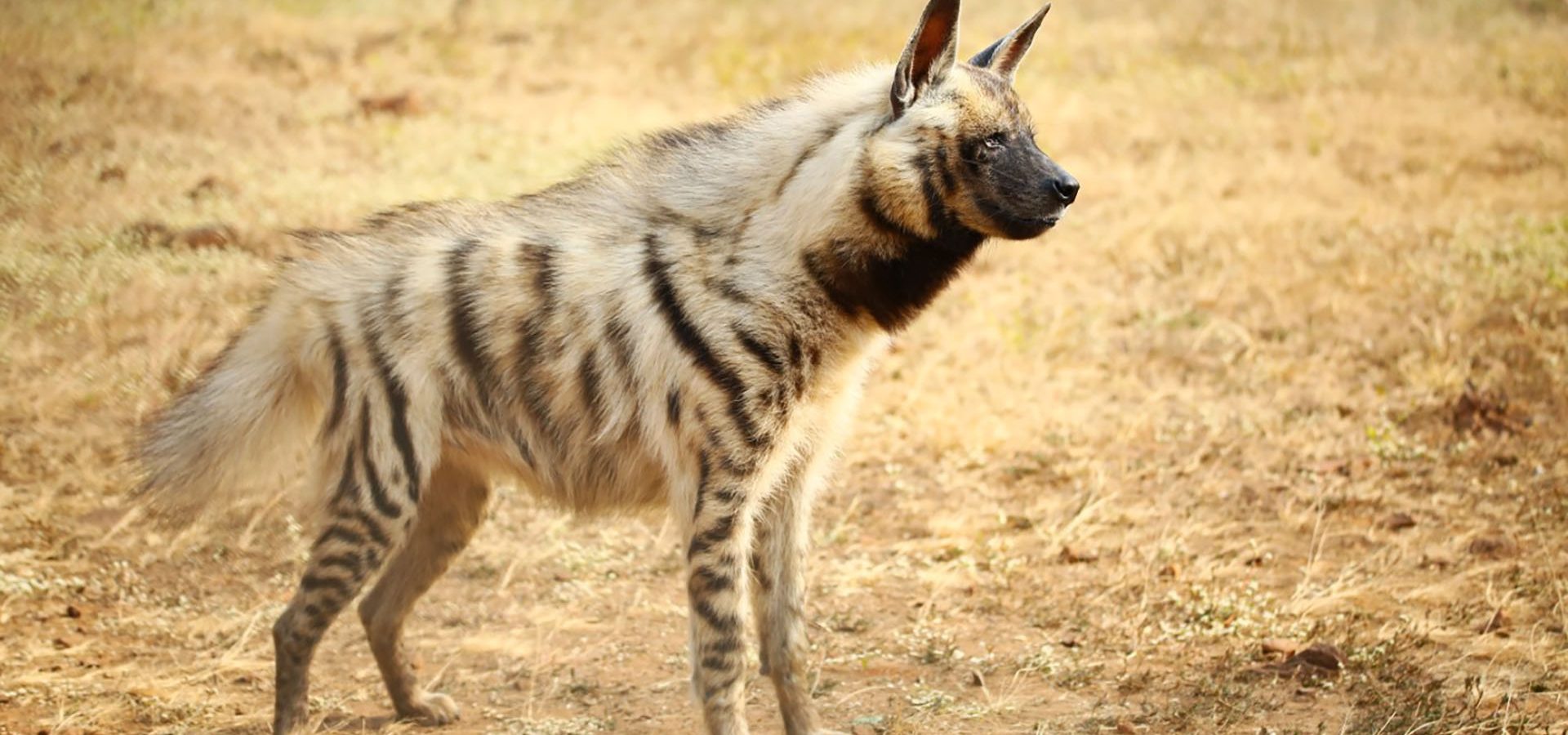Their unusual physical appearance and scavenging habits have given hyenas a reputation that’s undeserving.
For centuries, folklore and superstition have misrepresented hyenas and they are perceived as harbingers of evil and often considered to be mounts of witches in several cultures. Even books and movies have depicted them as ugly, dim-witted scavengers —remember the cackling hyenas from “The Lion King”?
Well, there’s more to the hyena that meets the eye and it’s about time we gave this highly formidable yet underappreciated species a second chance!
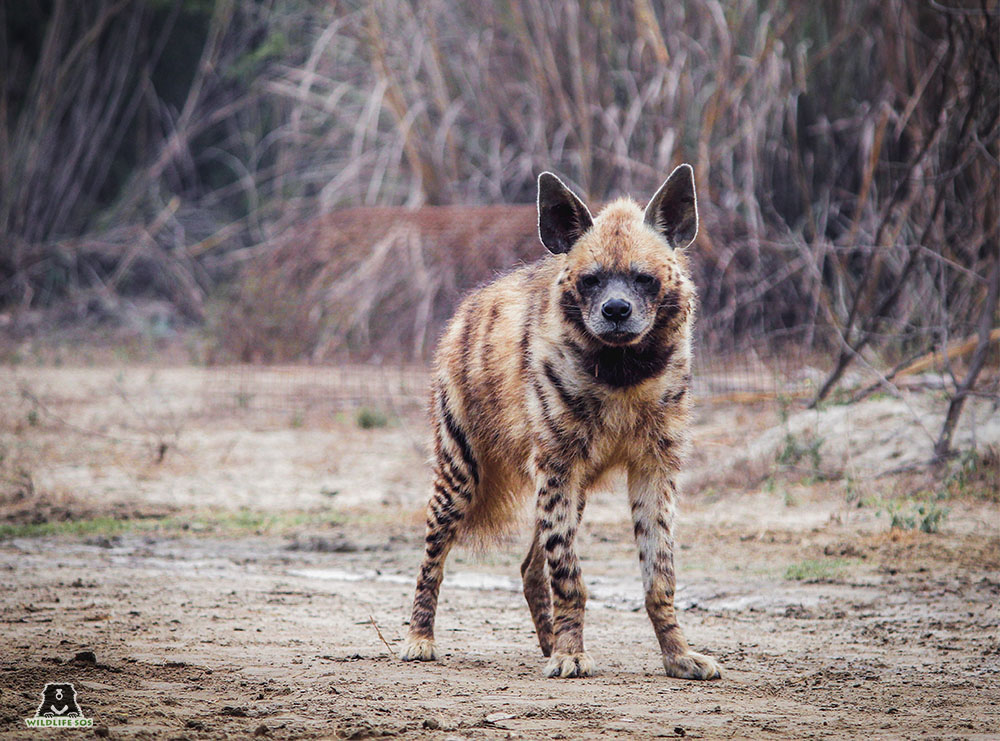
- One-of-a-kind! It’s a common misconception that Hyenas belong to the canid family but in fact, these animals are so unique that they belong to their very own family—Hyaenidae. Of the four species found across the world, India is home to the Striped Hyena.
They inhabit arid and semi-arid ecosystems, as well as in the extremely wet regions of the south-western coast of India, and are found in Rajasthan, Uttar Pradesh, Madhya Pradesh, Maharashtra, Gujarat, and Karnataka.
- Don’t judge me by my looks! The most striking feature of the hyena is the legs—the front legs are longer than the hind legs. This also gives the hyena its distinct gait, making it seem like they are hunched and walk with a limp. While this does give off the impression that they are slow and dull—the truth is far from it. They are quite agile on their feet and are highly intelligent and socially complex animals.
- Its all about Girl Power! Female hyenas produce nearly three times more testosterone in their bodies than their male counterparts. As a result, they are larger and more aggressive than males. In fact, spotted hyenas, native to sub-Saharan Africa live in matriarchal societies led by an alpha female!
- Serial Monogamists! Striped Hyenas are known to live in monogamous pairs and the males play an equal role in rearing and nurturing cubs. Females give birth to 1-6 pups after a gestation period of 85-90 days and they are cared for by both parents.
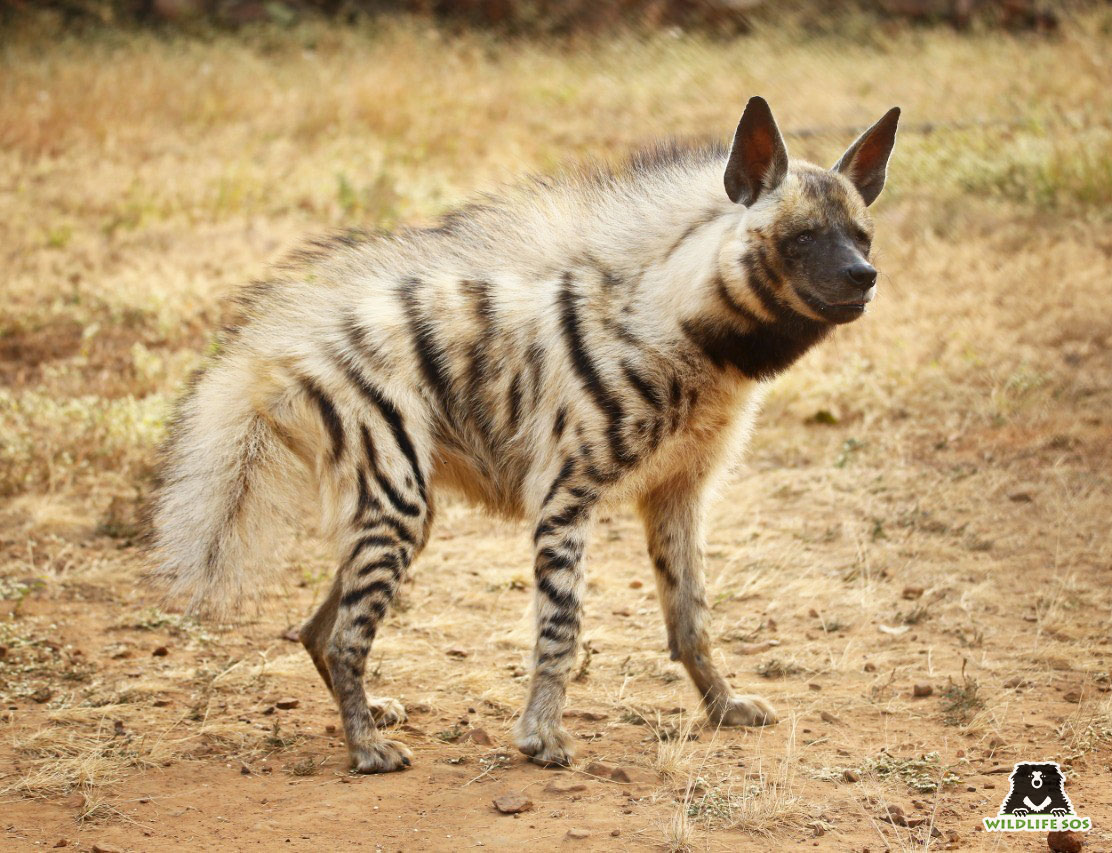
- Opportunistic Feeders with Bone Crushing Abilities! Although they can hunt down prey, hyenas are generally scavengers, feeding on domestic and wild carrion (animal carcasses). Their jaws are strong enough to crush the parts of carcasses such as teeth, bones, hooves, and horns.
- Nature’s very own pest control! Hyenas play a very vital role in maintaining a healthy ecosystem – apart from getting rid of biological waste by their scavenger habits; they also act as pest control. The hyena’s digestive system has adapted to maximize the nutritional value of animal remains; only the horns, hooves, and hair are regurgitated.
- Their numbers are dwindling! In India, the Striped Hyena is listed as ‘near threatened’ in the IUCN (International Union for Conservation of Nature) Red Data List. The striped hyena is an underrated species that definitely deserves more conservation attention. They are protected under Schedule III of the Wildlife Protection Act, 1972 but not much research has been carried out about this elusive species.
Their total population in India is yet to be determined and the IUCN Hyaena Specialist Group is currently mapping the status of the striped hyenas in the country.
- Major threats! include human-animal conflict, habitat destruction, highway and railway accidents, hunting and poaching for body parts, etc. Hyena skins are illegally traded and body parts are used in traditional medicine. hunting and poaching for body parts etc.
Wildlife SOS has rescued several hyenas that were injured in conflict situations or highway and railway accidents, as well as, victims of poachers’ snares and jaw traps.
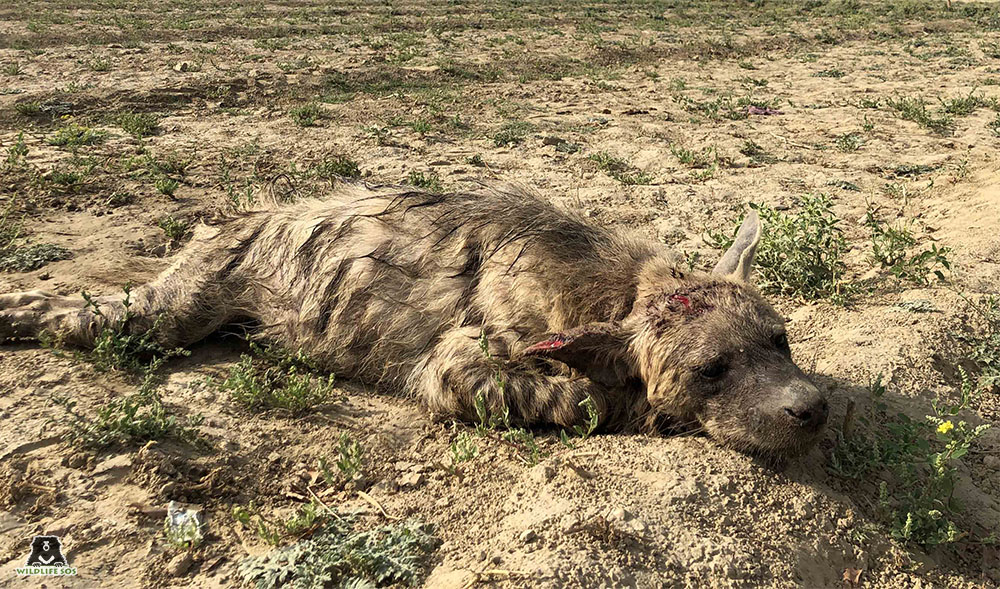
Earlier this month, a female Hyena was left fighting for her life after being hit by a speeding train just a few metres away from Fatehabad Railway station in Agra. Shocked by the sight of the animal lying unconscious near the railway tracks, a concerned passer-by alerted the forest department and the Wildlife SOS team operating out of the Agra Bear Rescue Facility, for immediate medical intervention. A detailed X-ray examination revealed that the impact of the collision left the animal with a severe spinal cord injury and despite our best efforts, the hyena succumbed.
In another incident, a male Striped hyena escaped a narrow brush with death after falling into a 30-foot-deep well in a village located in Tantpur, Agra. Wildlife SOS was able to assist the Uttar Pradesh Forest Department with timely intervention to save the hyena’s life in a three-hour-long rescue operation. The hyena had sustained injuries on its hind limbs and was rushed to the Wildlife SOS transit facility for medical treatment. Detailed X-ray examination revealed that the hyena has a fractured left hind limb and multiple injuries on the legs, and is currently undergoing intensive care and treatment.
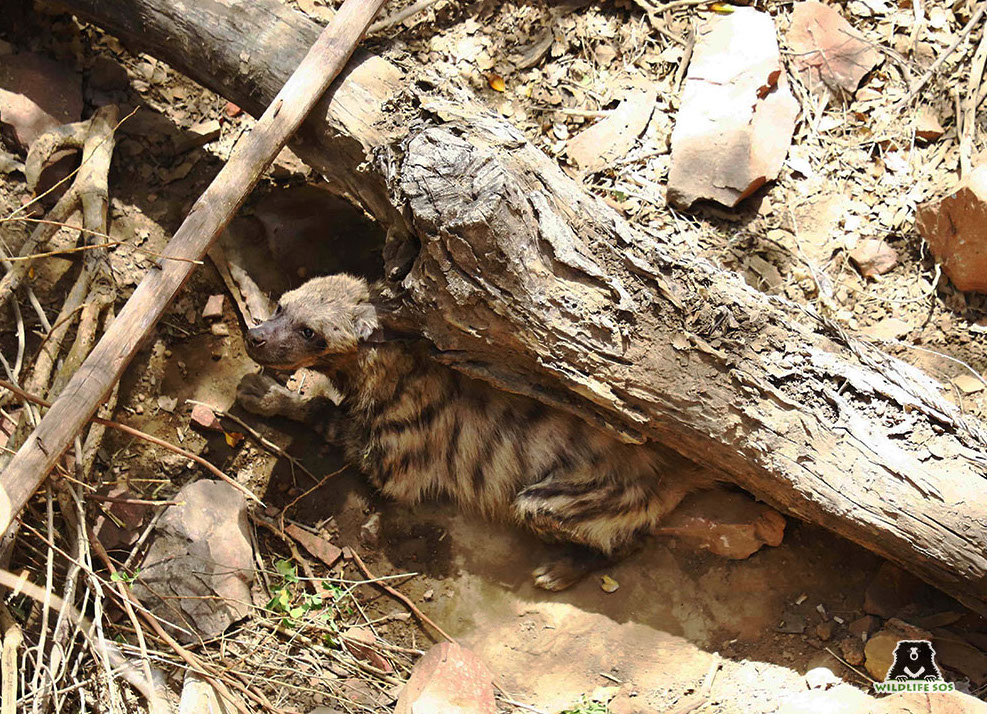
Incidents such as this make it imperative for us to spread awareness about the species and sensitize the public to their plight, as they struggle to gain a foothold in the shrinking forests.
The striped hyena is an underrated species that deserves more conservation attention as the survival of this species is crucial for the survival of a healthy, well-balanced ecosystem. Therefore, it is imperative to educate the local communities about conservation ethics and to inspire them to coexist with the wildlife that lives in close proximity to human settlements.


